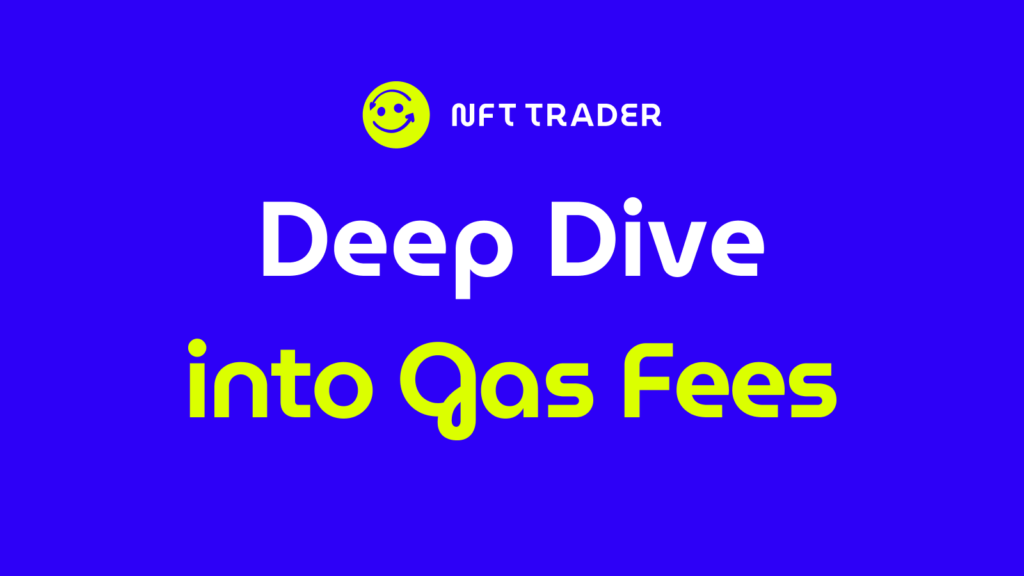Understanding the Cost of NFT: A Deep Dive into NFT Gas Fees

Across the spectrum of blockchains, a consistent presence of gas fees is evident. These fees serve a crucial role in maintaining the security and integrity of blockchains like Bitcoin. This is achieved through the meticulous validation of blocks and transactions via the mining process. Miners partake in this process, and the resulting fees are distributed as a reward for their role in upholding the network’s security and decentralized nature.
The trajectory of Ethereum’s development underwent a notable shift from a similar proof-of-work mechanism, akin to Bitcoin, to a proof-of-stake protocol. This pivotal transition rendered miners obsolete, entrusting the validation process to relatively cost-effective computers. These computers are required to stake 32 Ethereum tokens to gain the capacity for validating blocks and transactions. Participants adopting this role are termed validators, a model frequently adopted in other Layer 2 blockchains such as Polygon.
This evolution underscores the dynamic nature of blockchain protocols, as they continually adapt to optimize security, efficiency, and decentralization.
Summary:
- What are Gas Fees ?
- Why are Gas Fees necessary ?
- Significance of NFT Gas Fees
- How to Determine Gas Fees for NFT Transactions
- Strategies to Reduce Gas Fees
What are Gas Fees ?
Analogous to the fuel powering a car, gas fees play a comparable role in blockchain transactions. When individuals engage with a blockchain, they undertake two distinct actions: reading and writing.
Conceptually, envision the blockchain as a public ledger, a repository of information and transactions accessible to all. Reading from this ledger incurs no costs. However, writing onto the blockchain, given its decentralized and distributed nature, carries a fee. This fee is denoted as a gas fee, a compensatory mechanism for miners or validators who contribute to the network’s operation.
Gas fees remain variable, contingent upon the congestion levels within the network. Consider a scenario where a prominent brand introduces an NFT collection on the Ethereum blockchain; this can lead to a surge in transactions. Moreover, it’s imperative to acknowledge that each transaction can carry a designated gas amount reflecting the user’s willingness to pay for priority service, surpassing other transactions in the queue. This intricate interplay underscores the adaptable and fluid dynamics of blockchain networks.
Why are Gas Fees necessary ?
Gas fees serve as the foundational backbone of public blockchains, constituting a fundamental mechanism that remunerates miners and validators for maintaining the operational continuity and accessibility of their infrastructure. These participants receive rewards for their pivotal role in verifying transactions, thereby bolstering the overall security of the network. This remuneration system holds paramount significance, acting as a powerful incentive to sustain the decentralized nature inherent to public blockchains. By doing so, it endeavors to uphold a level of censorship resistance and preserve the core ethos of these networks.
Instances of gas fee surges are often indicative of heightened blockchain activity. When numerous individuals concurrently engage with the blockchain, the demand for transaction processing escalates. To expedite their own transactions’ processing, some users opt to pay a premium in gas fees, thereby securing a more prompt service. This dynamic interaction reflects the delicate equilibrium between network usage, incentives, and accessibility, all contributing to the intricate tapestry of a decentralized ecosystem.
Significance of NFT Gas Fees
It’s crucial to emphasize that NFT gas fees are synonymous with transaction fees; the two terms are interchangeable. As previously highlighted, the minting process of an NFT, particularly when undertaken by a renowned brand on a given blockchain, can trigger an upsurge in gas fees.
For newcomers to the blockchain realm, it’s worth noting that the cost associated with minting an NFT may be perceived as a type of gas fee. While they may often be presented jointly in web wallets, it’s essential to recognize that these are distinct concepts that should be treated separately.
Similarly, this distinction applies when interacting with NFT Marketplaces, DEXs, and other platforms. Gas fees can exhibit variability based on the degree of gas optimization within the smart contracts employed by end users for their transactions.
Moreover, it’s pertinent to understand that when purchasing an NFT through a popular marketplace, the gas fees serve a dual purpose. They facilitate the processing of the transaction on the blockchain while also apportioning the acquired value between the prior owner and the NFT’s creator. In essence, gas fees cover both facets of the transaction, contributing to the smooth exchange of ownership and the rightful remuneration of the NFT creator.
Each blockchain operates with its distinct gas fee structure, with Layer 1 blockchains such as Bitcoin and Ethereum typically featuring higher fees when contrasted with Layer 2 counterparts like Polygon, Avalanche, and Binance Smart Chain. This divergence stems from the core focus of Layer 2 blockchains on enhancing the scalability of blockchain technology. Notably, the Layer 1 blockchain Flow merits mention for its capacity to strike a balance between being a Layer 1 protocol while remaining notably optimized in terms of gas fees. This nuanced ecosystem showcases the intricate interplay between blockchain layers, scalability, and fee dynamics.

How to Determine Gas Fees for NFT Transactions
Understanding Gas Fees for NFT transactions is typically straightforward. When initiating a transaction through a wallet, the wallet interface typically provides information regarding the average gas costs and the specific cost associated with your transaction.
Additionally, certain widely-used websites and browser plugins offer recommendations for optimal gas costs to ensure swift blockchain transactions. However, it’s crucial to exercise caution, as these recommendations might occasionally lead to higher expenses. Manually adjusting the gas cost in an attempt to expedite transactions can result in unexpectedly elevated costs.
This serves as a reminder that while gas fees are a functional aspect of blockchain operations, they can sometimes fluctuate unexpectedly, underscoring the need for users to remain informed and judicious when navigating the dynamic landscape of transaction costs.
In gaming platforms like Axie Infinity and CryptoKitties, individuals who assume the role of a breeder play a pivotal role in managing the supply of digital assets. For these breeders, vigilant monitoring of gas costs is of paramount significance. Elevated gas fees can have a detrimental effect on their minting activities, potentially impeding their ability to generate new assets in a cost-effective manner. As gas fees directly impact the profitability of their endeavors, breeders must carefully consider and manage these fees to optimize their operations and maintain a favorable balance between costs and returns.
Strategies to Reduce Gas Fees
Mitigating gas fees is a multifaceted endeavor that extends beyond the sphere of blockchain users alone. First and foremost, optimizing smart contracts plays a pivotal role in gas fee reduction. For instance, if a smart contract necessitates iterative data validation before altering the blockchain’s state, the resulting transaction can become prohibitively costly. This elementary illustration underscores the imperative for lean and streamlined contracts, which not only minimize gas costs but also curtail the susceptibility to security breaches stemming from contract complexity.
On the user’s end, strategically timing transactions during quieter periods of on-chain activity can significantly diminish gas expenses. These tranquil intervals present opportune windows for executing transactions that were postponed pending more favorable gas fee conditions.
Certain wallets offer the option to configure transactions with a “lower speed,” a feature that proves instrumental in diminishing gas costs. This strategic approach can effectively balance transaction speed with cost efficiency.
Another avenue for gas fee mitigation involves harnessing Layer 2 blockchains, although the decision to do so warrants careful consideration. While Layer 2 solutions can offer reduced gas fees, the trade-off may involve a potential compromise on activity levels and liquidity, which are often more pronounced on Layer 1 blockchains.
Ultimately, the pursuit of gas fee reduction necessitates a comprehensive approach, encompassing contract optimization, astute timing, technological features, and a nuanced evaluation of Layer 2 versus Layer 1 considerations. This multifarious strategy empowers blockchain participants to navigate the intricate realm of gas fees with greater efficacy.



